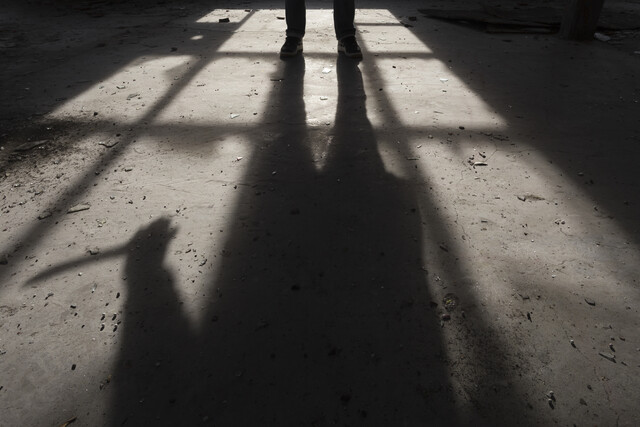Veteran crime scene investigators almost always assume the worst when it comes to approaching a crime scene. In many cases, murder is the first thing that crosses their mind when approaching any victim. Even in cases where suicide or accident may be apparent, the investigation must proceed as if a murder took place in order to ensure that the scene has not been staged to look like a suicide or death by natural causes when it was caused by murder.
Cause of death is of primary importance when viewing a victim, and is sometimes obvious, while other times, it is not. In some cases, a crime scene investigator may approach a scene in which it may appear that the victim has merely fallen asleep or died of old age when in fact they have been poisoned or injected with drugs. In many cases, murders that are staged to look like suicides may appear realistic at first, and only through careful processing and examination will the truth be revealed.
In some cases, determining the cause of death may appear simple. Gunshot wounds, stabbings, and strangulation are all obvious modes of death, but should never be assumed to be the cause of death until all the facts and evidence has been gathered. In many cases, toxicology results produce alternative findings in the disposition of a criminal case, so it is important that the crime scene investigator does not allow first impressions to tarnish the processing of any crime scene for additional evidence.
In order to insure that an adequate investigation proceeds at every crime scene, a good investigator should know how to evaluate the difference between gunshot and stab wounds, as well as the decomposition process of a body found indoors, in the water and outdoors over a period of time. While in some cases a forensic pathologist may be called in to assess cases where a body has been missing after a period of time and decomposition has begun, an investigating officer should also be aware of the basics in order to properly proceed with the investigation. Making the wrong cause of death determination may lead the investigation in the wrong direction and may ultimately impact the resolution of a crime.
There are many ways in which a crime scene investigator may approach the scene in order to make an initial attempt to what occurred there. For example:
- Are there signs of struggle?
- Is victim's clothing torn?
- Could the victim have caused his or her own death?
- Is a weapon present?
- What caused the death?
These are just a few questions that the investigator should ask him or herself immediately. Also be aware that there is a difference between determining an apparent cause of death from an actual cause of death. In attempting to interpret a crime scene, the investigator must never jump to conclusions. It merely serves as a place for the investigation to start. In actuality, the medical examiner is the only one who should make a final determination of the cause of death. However, there have been some recorded cases where even a medical examiner or pathologist has erred in such a determination.
When asking whether or not the victim could have been involved in his or her own death, attention to details is vital. In addition, getting to know the victim through family and friends is also important in determining the state of mind of the victim prior to death. Referred to as victimology, which was briefly covered in a previous lesson, this history of the victim may become the deciding factor in whether a death investigation continues as a suicide, an accidental death or as a homicide.
The crime scene investigator must always thoroughly examine the crime scene, even in cases where the cause of death seems obvious. Are the signs and pieces of evidence consistent with a suicide or do they point to murder? Attention to detail is one of the key factors involved in making a determination. For example, a male victim received a gunshot wound to the right temple. A revolver is found in the victim's right hand. Initially, the crime scene investigator may believe that the victim committed suicide, but then the victim's mother tells the investigator that her son was left handed. This should serve as a "red flag" to the investigator and prompt his or her attention to the fact that the crime scene has been staged.
In addition, signs of struggle often indicate that another person or persons has been involved in a victim's death. What are some signs of a struggle?
- Bloodstains in various areas or locations of the crime scene
- Torn clothing
- Scratches or defense marks on the victim (or suspect)
- Overturned or broken furniture
- Clumps of pulled-out hair
A victim might have moved from one portion of a house or crime scene to another in the perpetration of the attack, and signs of evidence or struggle might enclose a large or small area, or be entirely absent in the area where the victim had been found.
A victim will not necessarily leave bloodstains or spots upon the first blow of an attack. However, each successive blow will cause blood to spatter or drip as the object used in the attack picks up blood and debris and sprays or spatters on other objects. For example, a victim may be initially attacked in a kitchen, but not leave evidence of blood until he or she reaches the living room, as the object that has been used to attack the victim becomes saturated with blood. Bloody handprints and smears often follow the trail of the victim as he or she attempts to escape the attacker.
Blood interpretation will be covered in a later lesson, but suffice it to say that unless the victim does not immediately succumb to the attack, or is knocked unconscious immediately, he or she will leave a trail of blood for investigators to follow.
When investigating a crime scene, even one that is apparently a suicide, investigators must search the premises or location for signs of blood or other biological evidence, especially on doorknobs, keys and curtains. In many cases, signs of a struggle are erased if the perpetrator cleans up the area, but in many cases, a suspect will forget to check and clean the underside of furniture or will leave fingerprints or bloody smears when moving the victim, cleaning up after himself or even something as simple as flushing the toilet. Always check inside and outside of objects for fingerprints and bloodstains, as well as always looking up to check ceilings and beams for blood spray or spatter.
On the other hand, victims committing suicide or those caused by accidental death often make various injuries that may appear to be defense injuries. Such is the case in poisoning or hanging, when a victim may kick or lash out as their bodies react to poisons or the rope tightening around their neck. They may scratch or gash their hands or arms, and feet may kick holes in walls or break or otherwise move furniture.
Examining a Body
When examining a victim's body, the clothing should always receive special attention. In many cases, this will occur at the medical examiner's office in the presence of the crime scene investigator and case detectives.
The condition of the clothing should be noted in reports as well as their position when the victim was found. Any oddities, such as buttons in the wrong holes, clothes inside out, or looking oddly twisted or awkward should be noted. Torn off buttons are indications of a struggle, as are tears and holes caused by knives, bullets or other objects.
Any damage to clothing should be noted and measured in the crime investigator's report. Any materials found or suspected on the victim's clothing should also be noted, such as blood, possible semen or saliva or bodily fluids, as well as dirt and other contaminants.
The presence and location or even lack of blood on a victim may be an indication of what happened. In many cases, various blood smears, stains and drips may indicate how the victim was situated at a given point in time. Direction of blood flow may indicate a victim was standing when a wound was received, or may indicate that he or she was already dead when a particular wound was inflicted.
A bloody froth around the mouth may indicate that the victim did not die immediately, as when a person who has been injured in the lungs continues to breathe and fight for life. However, such frothing may also occur after death as decomposition occurs.
In many cases, criminals attempt to clean the body. However sometimes washing or wiping hands clean of blood often leaves traces of it beneath fingernails and on the nails near the cuticles. Coagulated blood often settles into cracks, crevices and folds of skin. Blood often remains trapped in ear canals, nasal passages and hair despite repeated washings.
Conclusion
Despite the presence of evidence, or lack of it, a crime scene investigator must never leap to conclusions based on initial appearances. Many inexperienced officers and crime scene investigators often miss vital signs that contradict what their eyes may be seeing. Process every crime scene as if a murder has occurred, no matter what, and avoid the possibility of allowing a criminal to go free just because what looked like a suicide was not thoroughly investigated. Always listen and pay special attention to what friends and relatives say, especially in the case of what appears to be suicide. Only through combining victimology and thoroughly processing a crime scene will the crime scene investigator reach the truth of the matter.
























